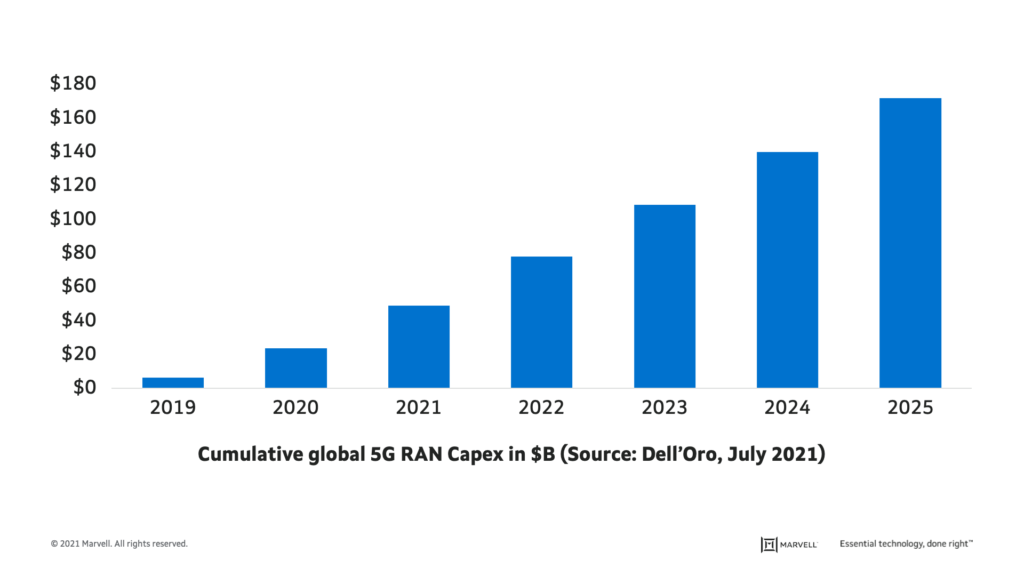

By Kristin Hehir, Senior Manager, PR and Marketing, Marvell
The sheer volume of data traffic moving across networks daily is mind-boggling almost any way you look at it. During the past decade, global internet traffic grew by approximately 20x, according to the International Energy Agency. One contributing factor to this growth is the popularity of mobile devices and applications: Smartphone users spend an average of 5 hours a day, or nearly 1/3 of their time awake, on their devices, up from three hours just a few years ago. The result is incredible amounts of data in the cloud that need to be processed and moved. Around 70% of data traffic is east-west traffic, or the data traffic inside data centers. Generative AI, and the exponential growth in the size of data sets needed to feed AI, will invariably continue to push the curb upward.
Yet, for more than a decade, total power consumption has stayed relatively flat thanks to innovations in storage, processing, networking and optical technology for data infrastructure. The debut of PAM4 digital signal processors (DSPs) for accelerating traffic inside data centers and coherent DSPs for pluggable modules have played a large, but often quiet, role in paving the way for growth while reducing cost and power per bit.
Marvell at ECOC 2023
At Marvell, we’ve been gratified to see these technologies get more attention. At the recent European Conference on Optical Communication, Dr. Loi Nguyen, EVP and GM of Optical at Marvell, talked with Lightwave editor in chief, Sean Buckley, on how Marvell 800 Gbps and 1.6 Tbps technologies will enable AI to scale.
By Matt Bolig, Director, Product Marketing, Networking Interconnect, Marvell
There’s been a lot written about 5G wireless networks in recent years. It’s easy to see why; 5G technology supports game-changing applications like autonomous driving and smart city infrastructure. Infrastructure investment in bringing this new reality to fruition will take many years and 100’s of billions of dollars globally, as figure 1 below illustrates.
Figure 1: Cumulative Global 5G RAN Capex in $B (source: Dell’Oro, July 2021)
When considering where capital is invested in 5G, one underappreciated aspect is just how much wired infrastructure is required to move massive amounts of data through these wireless networks.
Copyright © 2025 Marvell, All rights reserved.